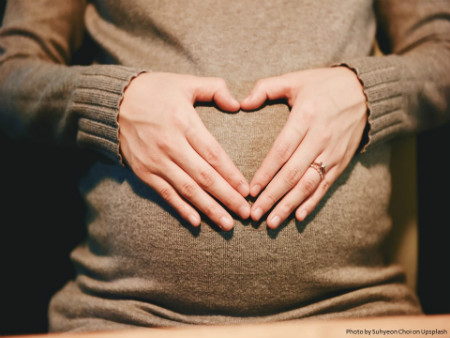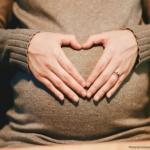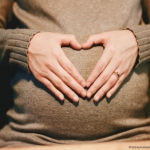Although the last several decades of research have yielded important findings regarding the safety of antidepressants during pregnancy, some areas are still understudied. For example, there are no conclusive results concerning the risk of spontaneous abortions following antidepressant exposure during the first trimester. Several recent meta-analyses, including one from the Motherisk program (Hemels, 2005), have observed an increased risk of spontaneous abortion among women taking antidepressants.
However, the results vary. In a meta-analysis, Hemels and colleagues (2005) observed a 1.45-fold increased risk of spontansous abortion in women exposed to antidepressants. The overall risk of spontaneous abortion was considered to be within the normal range in antidepressant-exposed women (12.4%) but was higher than that observed in the unexposed control group (8.7%). Others have found an increased risk only with certain antidepressants; Broy and Bérard (2010), for example, found an increased risk of spontaneous abortion with paroxetine and venlafaxine but not with other SSRIs or tricyclic antidepressants.
Other researchers have determined that the available data are simply insufficient; Gentile (2008) concluded that the available studies were too scarce and methodologically inadequate to draw any conclusion about the risk of spontaneous abortion for women taking SSRIs. Similarly, Santone and colleagues (2009) reviewed 10 studies of antidepressant exposure during pregnancy and determined that all of the studies had methodological flaws and presented a lack of strong evidence regarding the risk of spontaneous abortion. Simply put, no definitive association between antidepressant exposure and spontaneous abortion has been found.
In a recent prospective cohort study, Adrienne Einarson and colleagues at the Motherisk Program, sought to more adequately address the issue of spontaneous, as well as therapeutic, abortion in women taking antidepressants. Study participants were a cohort of women who called the Motherisk program during the first trimester of pregnancy. Researchers had two points of contact with the women; the first contact was used to collect information on demographics, medical and obstetrical histories, and details of exposure and concurrent exposures. In the postpartum follow-up contact, the researchers collected information about gestational findings, fetal outcomes, and neonatal health.
The researchers evaluated 937 women exposed to antidepressants prior to and during the first trimester of pregnancy. Buproprion, citalopram, escitalopram, fluvoxamine, fluoxetine, mirtazepine, nefazodone, paroxetine, sertraline, trazodone, and venlafaxine were all represented in the sample. They compared the outcomes in this group to a control group consisting of 937 women who were matched to the exposure group for age, smoking, alcohol use, and gestational age, and who were not exposed to antidepressants or any known teratogens. Of note, all study data was collected by self-report; medical records were not collected.
In this study, which is the largest prospective cohort study to date, the authors observed 122 (13%) spontaneous abortions in the antidepressant group versus 75 (8%) in the comparison group. The relative risk of spontaneous abortion in the antidepressant group was 1.63-fold greater than in the non-exposed group. The researchers did not differentiate among different antidepressants in their analysis. The only other factor found to be associated with a higher risk of spontaneous abortion was previous spontaneous abortion. Also of note, women in the antidepressant group were 3.25 times as likely to report a therapeutic abortion those women in the non-exposed group.
A significant issue in assessing the risk of spontaneous abortion in this population is that accurate figures for the rate of spontaneous abortion in the general population are not known, and estimates range from 7-15%. It is reassuring that the risk of spontaneous abortion in the antidepressant-exposed group (13%) falls within this range. Further, self-report studies may not accurately classify abortions as spontaneous versus therapeutic, as women may not feel comfortable about answering questions related to abortion.
In addition, the authors of the study note that the study design did not allow for a distinction between the effect of antidepressant medications versus the effect of depression itself on the risk of spontaneous abortion. With regard to therapeutic abortion in particular, a number of factors may contribute to increased risk in these women, including fear of negative outcomes due to medication exposure or worry about one’s inability to cope with a child (due to mental health or other issues).
The authors conclude that there appears to be a small but statistically significant increase in the incidence of spontaneous abortion in women with antidepressant exposure during pregnancy, and that there is also a higher incidence of therapeutic abortion in exposed women. Further, they add that it is impossible based on the existing research to confidently attribute the increased risk of spontaneous abortion in exposed women to antidepressants versus depression itself.
Amy Heberle, BA
April Hirschberg, MD
Broy P, Bérard A. Gestational exposure to antidpressants and the risk of spontaneous abortion: a review. Curr Drug Delivery 2010; 7(1): 76-92.
Einarson A, Choi J, Einarson TR, Koren G. Rates of spontaneous and therapeutic abortions following use of antidepressants in pregnancy: results from a large prospective database. J Obstet Gynaecol Can. 2009 May;31(5):452-6.
Gentile S. Pregnancy exposure to serotonin reuptake inhibitors and the risk of spontaneous abortions. CNS Spectr. 2008; 13(11): 960-6.
Hemels ME, Einarson A, Koren G, Lanctot KL, Einarson TR. Antidepressant use during pregnancy and the rates of spontaneous abortions: a meta-analysis. Ann Pharmacother 2005; 39: 803-9.
Santone G, Ricchi G, Rocchetti D, Tofani S, Bellantuono C. Is the exposure to antidepressant drugs in early pregnancy a risk factor for spontaneous abortion? A review of available evidences. Epidemiol Psichiatr Soc. 2009; 18(3): 240-7.





This article was reassuring but alarming at the same time. We continue to urge patients to treat their depression during pregnancy since there are risks due to untreated depression that are bad for the mom and the fetus. Scary for moms to assume an increased risk, with no preference for certain antidepressants, when there is also guilt for being depressed.
Thanks